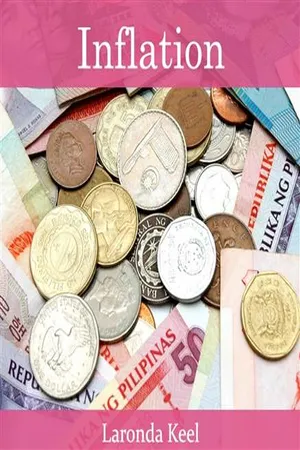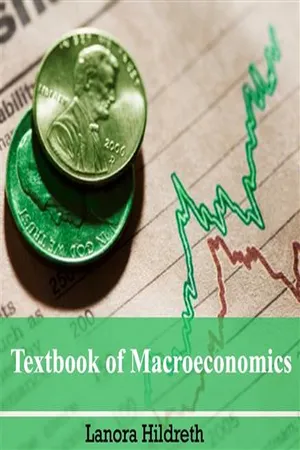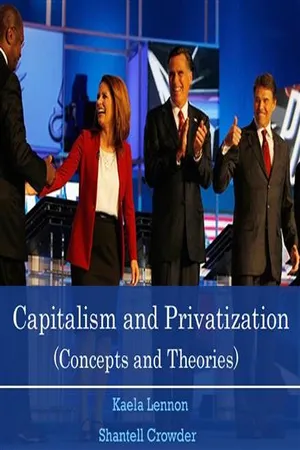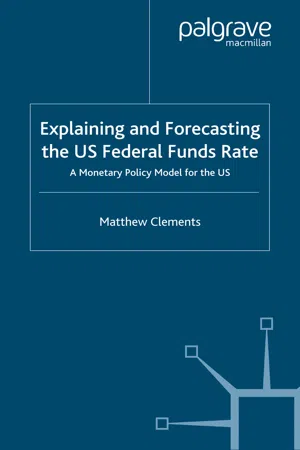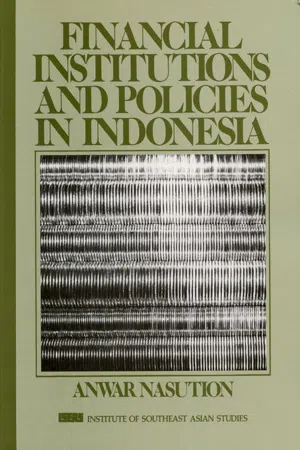Economics
Monetary Policy Tools
Monetary policy tools are instruments used by central banks to manage the money supply and interest rates in an economy. These tools include open market operations, reserve requirements, and discount rates. Open market operations involve buying and selling government securities to influence the money supply, while reserve requirements and discount rates impact the amount of money banks can lend and borrow.
Written by Perlego with AI-assistance
Related key terms
1 of 5
8 Key excerpts on "Monetary Policy Tools"
- No longer available |Learn more
- (Author)
- 2014(Publication Date)
- Orange Apple(Publisher)
The primary tool of monetary policy is open market operations. This entails managing the quantity of money in circulation through the buying and selling of various financial instruments, such as treasury bills, company bonds, or foreign currencies. All of these purchases or sales result in more or less base currency entering or leaving market circulation. Usually, the short term goal of open market operations is to achieve a specific short term interest rate target. In other instances, monetary policy might instead entail the targeting of a specific exchange rate relative to some foreign currency or else relative to gold. For example, in the case of the USA the Federal Reserve targets the federal funds rate, the rate at which member banks lend to one another overnight; however, the monetary policy of China is to target the exchange rate between the Chinese renminbi and a basket of foreign currencies. The other primary means of conducting monetary policy include: (i) Discount window lending (lender of last resort); (ii) Fractional deposit lending (changes in the reserve requirement); (iii) Moral suasion (cajoling certain market players to achieve specified outcomes); (iv) Open mouth operations (talking monetary policy with the market). Theory Monetary policy is the process by which the government, central bank, or monetary authority of a country controls (i) the supply of money, (ii) availability of money, and (iii) cost of money or rate of interest to attain a set of objectives oriented towards the growth and stability of the economy. Monetary theory provides insight into how to craft optimal monetary policy. Monetary policy rests on the relationship between the rates of interest in an economy, that is the price at which money can be borrowed, and the total supply of money. Monetary policy uses a variety of tools to control one or both of these, to influence outcomes like economic growth, inflation, exchange rates with other currencies and unemployment. - No longer available |Learn more
- (Author)
- 2014(Publication Date)
- White Word Publications(Publisher)
The primary tool of monetary policy is open market operations. This entails managing the quantity of money in circulation through the buying and selling of various financial instruments, such as treasury bills, company bonds, or foreign currencies. All of these purchases or sales result in more or less base currency entering or leaving market circulation. Usually, the short term goal of open market operations is to achieve a specific short term interest rate target. In other instances, monetary policy might instead entail the targeting of a specific exchange rate relative to some foreign currency or else relative to gold. For example, in the case of the USA the Federal Reserve targets the federal funds rate, the rate at which member banks lend to one another overnight; however, the monetary policy of China is to target the exchange rate between the Chinese renminbi and a basket of foreign currencies. The other primary means of conducting monetary policy include: (i) Discount window lending (lender of last resort); (ii) Fractional deposit lending (changes in the reserve requirement); (iii) Moral suasion (cajoling certain market players to achieve specified outcomes); (iv) Open mouth operations (talking monetary policy with the market). Theory Monetary policy is the process by which the government, central bank, or monetary authority of a country controls (i) the supply of money, (ii) availability of money, and (iii) cost of money or rate of interest to attain a set of objectives oriented towards the growth and stability of the economy. Monetary theory provides insight into how to craft optimal monetary policy. ____________________ WORLD TECHNOLOGIES ____________________ Monetary policy rests on the relationship between the rates of interest in an economy, that is the price at which money can be borrowed, and the total supply of money. - No longer available |Learn more
- (Author)
- 2014(Publication Date)
- College Publishing House(Publisher)
The primary tool of monetary policy is open market operations. This entails managing the quantity of money in circulation through the buying and selling of various financial instruments, such as treasury bills, company bonds, or foreign currencies. All of these purchases or sales result in more or less base currency entering or leaving market circulation. Usually, the short term goal of open market operations is to achieve a specific short term interest rate target. In other instances, monetary policy might instead entail the targeting of a specific exchange rate relative to some foreign currency or else relative to gold. For example, in the case of the USA the Federal Reserve targets the federal funds rate, the rate at which member banks lend to one another overnight; however, the monetary policy of China is to target the exchange rate between the Chinese renminbi and a basket of foreign currencies. The other primary means of conducting monetary policy include: (i) Discount window lending (lender of last resort); (ii) Fractional deposit lending (changes in the reserve requirement); (iii) Moral suasion (cajoling certain market players to achieve specified outcomes); (iv) Open mouth operations (talking monetary policy with the market). Theory Monetary policy is the process by which the government, central bank, or monetary authority of a country controls (i) the supply of money, (ii) availability of money, and (iii) cost of money or rate of interest to attain a set of objectives oriented towards the growth and stability of the economy. Monetary theory provides insight into how to craft optimal monetary policy. Monetary policy rests on the relationship between the rates of interest in an economy, that is the price at which money can be borrowed, and the total supply of money. - Thomas F. Cargill(Author)
- 2017(Publication Date)
- Cambridge University Press(Publisher)
Thus, targeting the money supply requires the central bank to allow the interest rate to change to achieve the target. Which policy instrument is best? Monetary policy can influence the real econ-omy through either the money supply or the interest rate channel. One policy instru-ment is not correct and the other incorrect – both are correct; however, there are practical issues to determine a preference for one or the other. In the past half-century central banks have largely used interest rates as the policy instrument, with the exception of a short period in the 1980s when central banks, including the Federal Reserve, focused on the money supply. That money-supply-focused policy was considered unsuccessful, and central banks returned to targeting interest rates. There are four practical reasons why central banks use interest rates as the policy instrument. First – definitional issues: The money supply is not an easy variable to define, and, even if one can reasonably measure money at a point in time, financial innova-tion will likely change the definition of money over time. Even though M2 money stock is widely accepted as a reasonable definition of the nation’s money supply, it remains an imprecise definition of money. Interest rates in contrast are easy to define. Second – measurement issues: Even if one accepts M2 as “the” definition of money, statistically M2 cannot be accurately measured on a week-to-week or even month-to-month basis, seriously limiting its usefulness as a policy instrument. Interest rates can be measured accurately day by day and even within the day. Third – control issues: Central banks have less control over the money supply than they did in the past as a result of variation in the money multiplier, which many attribute to the wider range of financial assets available to the public as the result of deregulation and financial liberalization. In contrast, central banks do have significant influence over short-term interest rates.- eBook - PDF
Explaining and Forecasting the US Federal Funds Rate
A Monetary Policy Model for the US
- M. Clements(Author)
- 2003(Publication Date)
- Palgrave Macmillan(Publisher)
INTRODUCTION The Fed describes monetary policy as ‘actions undertaken ... to influ- ence the availability and cost of money and credit to help promote national economic goals’. The Federal Reserve Act specifies that in conducting monetary policy, the Federal Open Market Committee (FOMC) should seek ‘to promote effectively the goals of maximum employment, stable prices, and moderate long term interest rates’. The Fed controls the three main tools of monetary policy: open market operations (the FFR), the discount rate, and reserve require- ments. This book examines only the FFR, which is influenced by open market operations, the buying and selling of securities, which is the Fed’s primary instrument for controlling monetary policy. The FOMC is responsible for open market operations and setting the FFR. The committee comprises 12 voting members and meets at eight scheduled meetings a year. The FFR is the interest rate at which depository institutions (banks) lend balances at the Fed to each other overnight. Changes in the FFR in turn affect other interest rates, both long and short term, such as government and corporate bonds, mort- gage and credit rates. The exchange rate of the dollar is also sensi- tive to changes in the FFR. Using this rate, the Fed can affect the price of money and credit. In this way it influences employment, output and inflation. Strictly speaking, the Fed’s mandate of ‘price stability’ is a misnomer. Price stability means, by definition, zero inflation. Also, CHAPTER 2 Monetary Policy at the US Federal Reserve 27 the mandate does not specify which inflation measure should be targeted. In reality, the Fed looks to achieve inflation stability using an inflation measure that it considers to best represent price move- ments across the economy. In February 2000, the Fed ostensibly signalled a preference for the Commerce Department’s Personal Consumption Expenditure (PCE) price index as its chosen inflation measure. - eBook - PDF
- Manzur Rashid, Peter Antonioni(Authors)
- 2015(Publication Date)
- For Dummies(Publisher)
To understand monetary policy you need to understand how the money market works, how the central bank can in effect choose the interest rate by varying the money supply and how it achieves this aim in practice. Luckily, we cover exactly these topics in this section! Taking a stall at the money market The money market is like any other market in that the price is determined by supply and demand. Things can get a little confusing, though, because you may be thinking: sure, a certain car or house can have a particular price, but how can money have a ‘price’? Isn’t money just money? The price of money is the interest rate: or more precisely, the nominal inter‑ est rate (we compare the meaning of nominal versus real in Chapter 2). Cash is the most liquid of assets, which means that you can easily convert it into goods and services. But when you hold cash, you give up the return that you could get by holding a less liquid asset (say, government bonds or a savings account). Thus the opportunity cost of holding cash is the return on govern‑ ment bonds/savings account – that is, the nominal interest rate. So, if the nominal interest rate is 2 per cent, by holding cash you’re effectively paying 2 per cent per year for the liquidity. At high interest rates the demand for money tends to be low, whereas at low interest rates the demand for money is relatively high, because holding cash is very costly (in terms of opportunity cost) when the interest rate is high. That is, people hold only as much cash as is necessary to get them through the next few days (or even hours). Conversely, when interest rates are low, holding cash isn’t that costly and people demand relatively a lot of it. 165 Chapter 10: Using Monetary Policy to Influence the Economy Bearing in mind that the central bank controls the money supply, equilibrium in the money market occurs when the quantity of money demanded is exactly equal to the quantity of money the central bank supplies. - eBook - PDF
Interest Rates, Prices and Liquidity
Lessons from the Financial Crisis
- Jagjit S. Chadha, Sean Holly(Authors)
- 2011(Publication Date)
- Cambridge University Press(Publisher)
1 New instruments of monetary policy Jagjit S. Chadha and Sean Holly 1 Introduction The chapters in this volume are the outcome of a conference held in Cambridge in March 2010. The title of the conference was ‘New instru- ments of monetary policy’. Its purpose was to bring together economists from academia, financial markets and central banks to discuss some of the challenges that arose from both the financial crisis itself and the response to that crisis. Many of the assumptions that underpin mainstream (core) macroeconomic models have been challenged as a result of the traumatic events of the past three years. In particular, it became clear that the modern, micro-founded, form of macroeconomic model failed to allow adequately for the financial sector. This failure, in part, reflected the belief that one could safely separate issues concerned with financial stability from the conduct of macroeco- nomic policy: macroeconomic policy, and in particular monetary policy, should be devoted to the stabilisation of inflation and output, and the short- term nominal interest rate used as the instrument of policy. Although it is well known that such a policy will be problematic when nominal interest rates are close to the zero interest rate floor, in practice it seemed that policy was successful in keeping the economy away from this region. The long road to price stability in the UK led down a number of cul-de-sacs, from monetary targets, shadow exchange rate targets, explicit exchange rate targeting and inflation targeting – without and then with operational central bank independence – and seemed to have arrived at its destination. - Anwar Nasution(Author)
- 2018(Publication Date)
- ISEAS Publishing(Publisher)
CHAPTER IV MONETARY INSTRUMENTS TO CONTROL MONEY SUPPLY AND CREDIT, AND INTEREST RATE POLICIES INTRODUCTION From the discussion in previous chapters, it is clear that too much has been expected from the monetary authorities in Indonesia. On the one hand, they are being asked to solve problems which they cannot solve. The government thinks that basic social, political, and economic problems can be solved by simply printing new money. Bank Indonesia, the central bank, and other state banks are simply an arm of the government and are placed under the control of a political and administrative branch of it. On the other hand, the monetary authorities are expected to check inflationary pressures that are being encouraged and reinforced by the actions and policies of the other branches of the government. As pointed mJt in Chapter I, the result of these conflicting assignments on the monetary policies is reflected in the persistence of social problems and the low effi-ciency of the banking system. As noted in Chapter I, management of the money supply has been difficult since 1972 due to the present structure of the government's budget, which finances domestic deficits with foreign surpluses. The amount of foreign exchange accruing to the government, mainly from oil revenues, which is being changed into rupiahs and spent through the budget, is too high compared to the total increase in money supply. In addition, private capital inflow is impossible to control under the current free exchange regime. The failure of the fiscal policy to neutralize external government revenues and private capital inflow increased the money supply by 34% annually in 1972-79, while during the same period the annual rates of growth of real income and inflation were only 7.25% and 20.75%, respectively (Table 1.1 ). Prior to 1972 ( 1968-71) the main sources of government external revenues were counterpart funds of foreign aid supplies.
Index pages curate the most relevant extracts from our library of academic textbooks. They’ve been created using an in-house natural language model (NLM), each adding context and meaning to key research topics.
